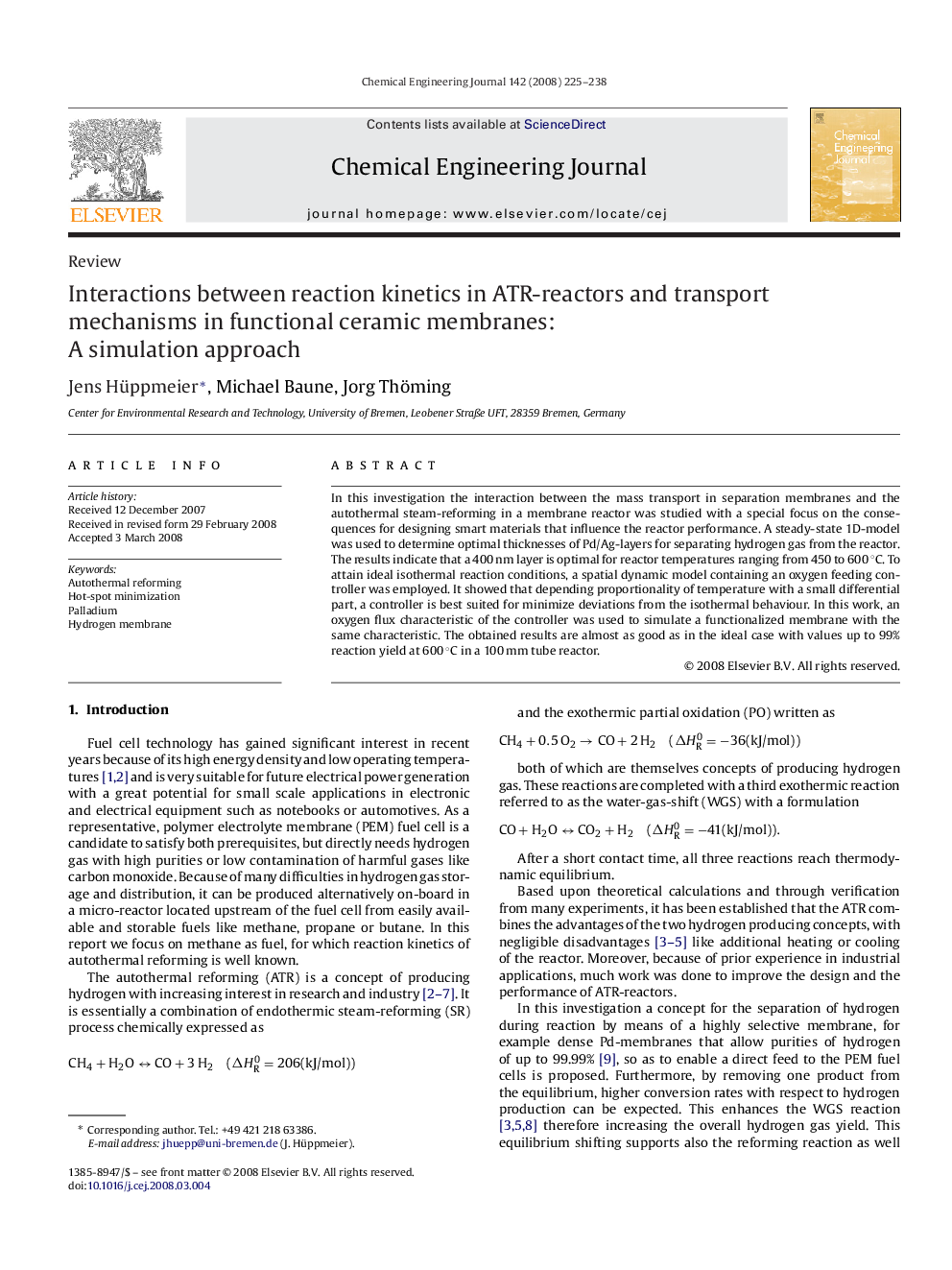| Article ID | Journal | Published Year | Pages | File Type |
|---|---|---|---|---|
| 152979 | Chemical Engineering Journal | 2008 | 14 Pages |
In this investigation the interaction between the mass transport in separation membranes and the autothermal steam-reforming in a membrane reactor was studied with a special focus on the consequences for designing smart materials that influence the reactor performance. A steady-state 1D-model was used to determine optimal thicknesses of Pd/Ag-layers for separating hydrogen gas from the reactor. The results indicate that a 400 nm layer is optimal for reactor temperatures ranging from 450 to 600 °C. To attain ideal isothermal reaction conditions, a spatial dynamic model containing an oxygen feeding controller was employed. It showed that depending proportionality of temperature with a small differential part, a controller is best suited for minimize deviations from the isothermal behaviour. In this work, an oxygen flux characteristic of the controller was used to simulate a functionalized membrane with the same characteristic. The obtained results are almost as good as in the ideal case with values up to 99% reaction yield at 600 °C in a 100 mm tube reactor.
